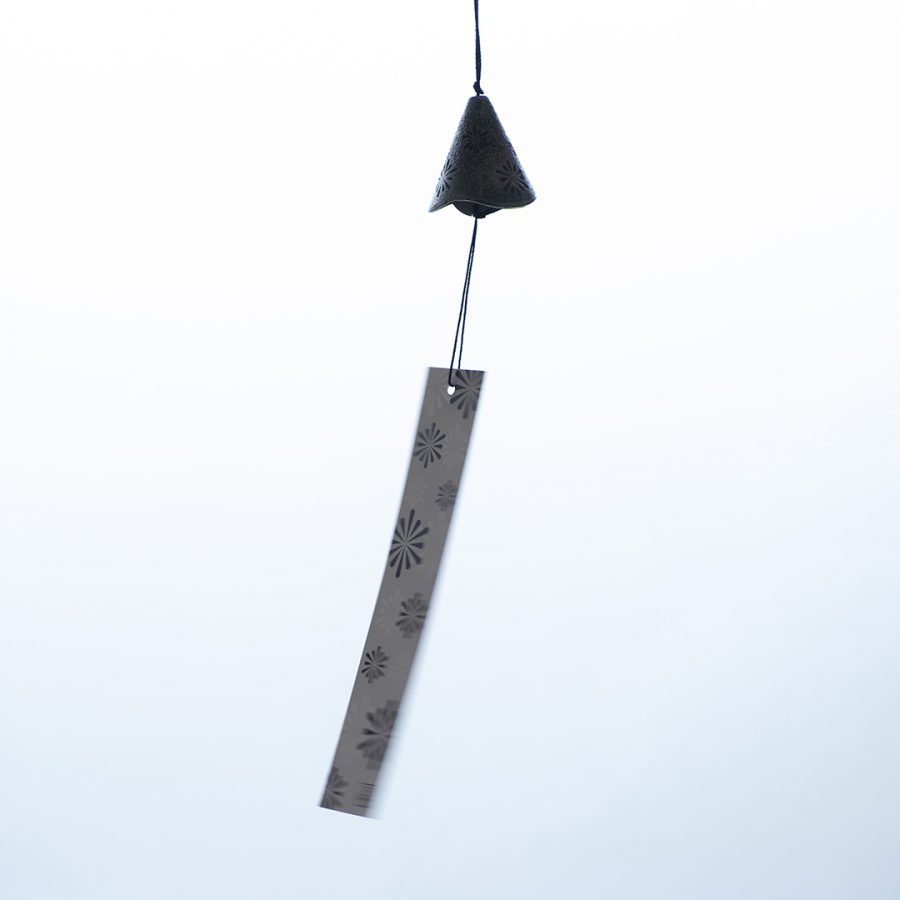2021.07.19
“Furin” Brings Coolness with Beautiful Sound

The furin wind chime brings temporary coolness with its gentle and light tinkling sounds in the heat of mid-summer. The origin is said to be the futaku wind bell brought from China along with Buddhism. Made of bronze, futaku, however, was not used for its sound but as a tool for divination, a charm or amulet against bad luck and evil. The futaku bells were hung under the eaves at four corners of the temple building because, in Japan in those days, it was believed that infectious diseases and evil spirits were brought in the wind and that people within reach of the sound were protected from disasters. It was around the Heian era when futaku started to be called furin.
It was not until the Edo era that people first enjoyed the sounds of furin. Glass was brought from the West to Nagasaki and started to be used to make furin. Initially expensive, furin became widely available among the public when mass production began. Furin increasingly gained popularity and took root in daily life as a commodity as they were painted with ukiyoe paintings and “furin-soba” noodle stands were invented. It is thought that furin was hung at the porch located in the southwestern end of the house, where Urakimon demon gate was. It was also expected to play the role of an amulet in the summer when infectious diseases easily spread.
Later, those with unique local features were invented, including “Edo Furin”, as well as “Nambu Furin” and “Odawara Furin”. The art of the traditional craft is still being passed down in modern days.